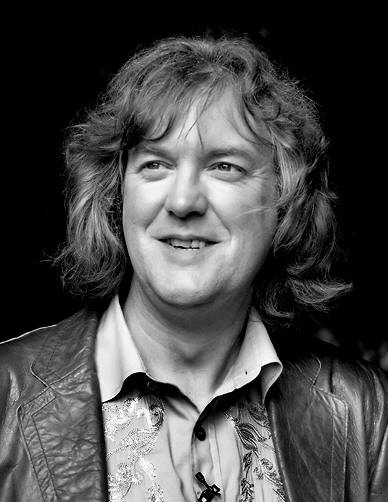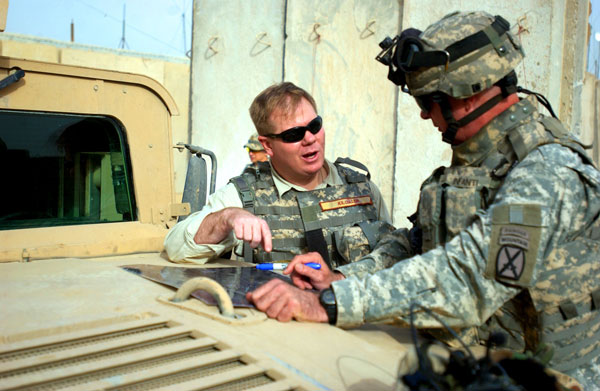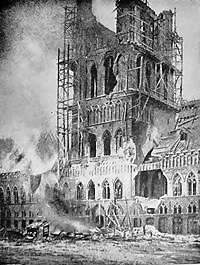|
Radschool Association Magazine - Vol 29 Page 12 |
|
Privacy Policy | Editorial Policy | Join the Association | List of Members | Contact us | Index | Print this page |
|
|
|
Spark plugs giving way to lasers.
Say goodbye to spark plugs, a 19th century technology that is about to be supplanted by lasers. The U.K. paper The Telegraph reports that Ford is working with the University of Liverpool to develop a laser ignition system for internal-combustion engines.
The laser beam is delivered by a thin, fibre-optic cable to a focusing lens that would take up much less space than a spark plug, allowing engineers greater flexibility in designing valves and cylinders. The laser beam can be split to ignite the fuel mixture from multiple points deep in the cylinder, making for a more efficient burn than a spark plug can achieve, reducing emissions and getting better fuel economy. Another advantage to the laser system is that part of the beam can be reflected to a receiver and used to gather data on the fuel mixture and the quality of the burn.
And this isn't merely a research project, as there are working prototypes of the system at the University of Liverpool laboratory now. Ford, which has eagerly been adopting fuel efficiency technology such as electric-power steering and six-speed transmissions, reportedly will use the laser ignition system in some of its cars over the next couple of years, then spread the technology to the full range.
The old spark plug, which has been around now about 110 years, many say, was invented by Sir Oliver Lodge and it was called “The Lodge Igniter for internal combustion engines”. Two of his sons developed his ideas and founded the Lodge Plug Company. Oliver Lodge is better known for his pioneering work in radio and was the first man to transmit a message by wireless.
During the early 1900s, France was the dominant manufacturer of spark plugs. A Frenchman, named Albert Champion, was a bicycle and motorcycle racer who immigrated to the United States in 1889 to race. As a sideline, Champion manufactured and sold spark plugs to support himself. In 1904, Champion moved to Flint, Michigan where he started the Champion Ignition Company for the manufacturing of spark plugs. He later lost control of his company and in 1908 started the AC Spark Plug Company. |
|
Q. What are four little words that are guaranteed to humiliate men everywhere? A. “Please hold my purse”.
|
|
The U-2.
The U-2
is a single-engine, very high-altitude
surveillance
aircraft which was developed for and flown by th
In the early 1950s, with Cold War tensions on the rise, the U.S. military required better strategic reconnaissance to help determine Soviet capabilities and intentions. The existing surveillance aircraft were primarily converted bombers, vulnerable to anti-aircraft artillery, missiles, and fighters. It was thought an aircraft that could fly at 70,000 feet or higher would be beyond the reach of Soviet fighters, missiles, and even radar. This would allow "overflights," knowingly violating a country's airspace to take aerial photographs.
The Air
Force gave contracts to Bell Aircraft, Martin Aircraft, and Fairchild
Engine and Airplane to develop
The U-2 first flew in August 1955, during what was only intended to be a high-speed taxi run. The sailplane-like wings were so efficient that the aircraft jumped into the air at 70 knots (130 km/h). |
|
My girlfriend always laughs during sex - no matter what she's reading.
|
|
The
unique design that gives the U-2 its remarkable performance also makes it
a difficult aircraft to fly. High-aspect-ratio wings give the U-2 some
glider-like characteristics, with a
lift-to-drag ratio estimated in the high 20s. To maintain their
operational ceiling of 70,000+ feet, the aircraft must fly very near its
maximum speed
The large wingspan and resulting glider-like characteristics of the U-2 also make it highly sensitive to crosswinds which, together with its tendency to float over the runway, makes the U-2 notoriously difficult to land. This results in a required chase car and assistant who "talks" the pilot down by calling off the declining height of the aircraft in feet as it decreases air speed in order to overcome the cushion of air provided by the high-lift wings in ground effect. Instead of the typical tricycle landing gear, consisting of a nose wheel and two sets of main wheels, one under each wing, the U-2 uses a bicycle configuration, with the forward set of main wheels located just behind the cockpit and the rear set of main wheels located behind the engine, coupled to the rudder in order to provide taxi steering.
To maintain balance while taxiing for takeoff, the ground crew installs two auxiliary wheels, called "pogos". These fit in sockets under each wing at about mid-span, and fall onto the runway as the aircraft takes off. To protect the wings during landing, each wingtip has a titanium skid. After the plane comes to a halt, the ground crew re-installs the pogos. The first pogo goes on the "light" or "up wing" while the other crew members use their weight to pull down the light side. Then two of the crew push up the heavy wing, allowing a third crew member to install a pogo on the other side.
Because
of the high operating altitude the pilot must wear the equivalent of a
space suit. The suit delivers the pilot's oxygen supply and emergency
protection in case cabin pressure is lost at altitude (the cabin provides
pressure equivalent to about 29,000 feet). To prevent hypoxia and decrease
the chance of decompressio
The aircraft carries a variety of sensors and is capable of simultaneously collecting signals, imagery intelligence and air samples. One of the most unusual instruments in the newest version of the U-2 is the off-the-shelf Sony video camera that functions as a digital replacement for the purely optical view-sight (an upside down periscope-like viewing device) that was used in older variants to get a precise view of the terrain directly below the aircraft, especially during landing. |
|
My cousin just died. He was only 19. He got stung by a bee, the natural enemy of a tightrope walker.
|
|
Since its
inception, the U-2 has constantly been upgraded to improve performance and
mission times. It now has a much improved engine provided by General
Electric that is efficient and much lighter than previous
The United States Air Force maintains a contingent of 36 operational U-2 aircraft including five two seat trainer types. Additionally, NASA operates two more U-2 units in the form of ER-2 for high-level research purposes. The U-2 aircraft will most likely be retained for some more years (it is proposed to operate the aircraft up to the year 2020) of service even though the initial U-2 was fielded in the 1950's.
Recently, James May, the long haired bloke from the BBC top rating TV show, “Top Gear”, went for a ride in a USAF two seater U-2 and of course, he took his trusty camera along for the ride. What resulted was some fantastic film of the aircraft and of the earth from miles up.
You can watch it HERE. |
|
Honesty is the key to a relationship. If you can fake that, you're in.
|
|
E10 not as cheap as it looks and not suitable for all cars.
The RACQ
is warning motorists that running a car on ethanol-blended petrol to save
money at the bowser is
You might pay 3 cents a litre less for it, but 1 litre does not take you the same distance as does 1 litre of ULP so a larger discount is required before it becomes economical sense to switch to E10.
|
|
Capital punishment turns the state into a murderer. Imprisonment turns the state into a gay dungeon-master.
|
|
Reservists hit for six.
I WAS pleased to read in Army that reserves will have a bigger role to play under the White Paper plan, including increased capacity for prolonged operational deployments.
I feel that this decision makes a mockery of the Tuesday nights I spend at the Miranda indoor cricket centre and the 10 or so weekends I sacrifice each year to develop my cricket skills. Ponting and his cronies even went so far as to claim that while I have the competencies to replace the big-hitting Queenslander, I do not have the competence to do so effectively on the international stage.
S02 ACMS
HQ |
|
Flanders.
Ypres occupied a strategic position during World War I because it stood in the path of Germany's planned sweep across the rest of Belgium and into France from the north (the Schlieffen Plan). The neutrality of Belgium was guaranteed by Britain and so Germany's invasion of Belgium brought the British Empire into the war. The German army surrounded the city on three sides, bombarding it throughout much of the war. To counterattack, British, French and allied forces made costly advances into the German lines on the surrounding hills.
In the First Battle of Ypres (31 October to 22
November 1914) the Allies captured the town from the Germans. In the
Second Battle of Ypres (22 April to 25 May 1915) the Germans used poison
gas for the first time on the Western Front (they had used it earlier at
the Battle of Bolimov on 3 January 1915) and captured high ground east of
the town. The first gas attack occurred against Canadian, British, and
French soldiers. The gas used was chlorine gas. Mustard gas, also called
Yperite from the name of this city, was also used for the first
time near Ypres in the autumn of 1917.
Of the battles, the largest, best-known, and most costly in human suffering was the Third Battle of Ypres (21 July to 6 November 1917, also known as the Battle of Passchendaele) in which the British, Canadians, ANZAC and French forces recaptured the Passchendaele ridge east of the city at a terrible cost of lives. After months of fighting, this battle resulted in nearly half a million casualties to all sides, and only several miles of ground won by Allied forces. The town was all but obliterated by the artillery fire.
English-speaking soldiers in that war often referred to Ypres by the mispronunciation "Wipers". British soldiers even self-published a wartime newspaper called the "Wipers Times".
Ray Thompson sent us a thought provoking Power Point presentation on Flanders Fields as it is today, it is definitely worth a look - you can see it HERE.
"Never lend your car to anyone to whom you have given birth."
|
|
|
|
Back Go to page: 1 2 3 4 5 6 7 8 9 10 11 12 13 14 15 16 17 18 19 20 Forward |

 e US Central
Intelligence Agency about 50 years ago, but which is now flown by the USAF.
It provides day and night, very high-altitude, all-weather
surveillance.
The aircraft is also used for electronic sensor research and development,
satellite
calibration, and satellite data validation.
e US Central
Intelligence Agency about 50 years ago, but which is now flown by the USAF.
It provides day and night, very high-altitude, all-weather
surveillance.
The aircraft is also used for electronic sensor research and development,
satellite
calibration, and satellite data validation. proposals for the new reconnaissance
aircraft. Officials at Lockheed Aircraft Corporation heard about the project and asked aeronautical engineer Clarence "Kelly" Johnson to come
up with a design. Johnson was a brilliant designer, responsible for the
proposals for the new reconnaissance
aircraft. Officials at Lockheed Aircraft Corporation heard about the project and asked aeronautical engineer Clarence "Kelly" Johnson to come
up with a design. Johnson was a brilliant designer, responsible for the
.jpg) .
The aircraft's stall speed at that altitude is only 10 knots less than its
maximum speed and for 90% of the time on a typical mission, the U-2 flies
at only five knots above its stall speed. This puts enormous strain on the
pilot as a stall at that altitude could cause a sudden and massive and
rapid decrease in altitude likely to overstress the lightly built
airframe.
.
The aircraft's stall speed at that altitude is only 10 knots less than its
maximum speed and for 90% of the time on a typical mission, the U-2 flies
at only five knots above its stall speed. This puts enormous strain on the
pilot as a stall at that altitude could cause a sudden and massive and
rapid decrease in altitude likely to overstress the lightly built
airframe..jpg)
.jpg) n
sickness, pilots don a full pressure suit and begin breathing 100% oxygen
one hour prior to launch to de-nitrogenize the blood and while moving from
the flight line to the aircraft they breathe from a portable oxygen
supply.
n
sickness, pilots don a full pressure suit and begin breathing 100% oxygen
one hour prior to launch to de-nitrogenize the blood and while moving from
the flight line to the aircraft they breathe from a portable oxygen
supply. engines and avionics and other systems have been modernized to extend the
life of the aircraft. More modifications are planned.
engines and avionics and other systems have been modernized to extend the
life of the aircraft. More modifications are planned. likely
to be false economy. They say E10’s maximum three cents a litre price
advantage over regular unleaded petrol (ULP) is not enough to compensate
for higher fuel consumption from the ethanol blend. E10 is increasingly
‘headlined’ on service station price boards because of its slightly lower
pump price, however, RACQ’s own field testing has confirmed other
independent research that indicates you use 3 percent more E10 fuel to
cover a set distance than if you used ULP.
likely
to be false economy. They say E10’s maximum three cents a litre price
advantage over regular unleaded petrol (ULP) is not enough to compensate
for higher fuel consumption from the ethanol blend. E10 is increasingly
‘headlined’ on service station price boards because of its slightly lower
pump price, however, RACQ’s own field testing has confirmed other
independent research that indicates you use 3 percent more E10 fuel to
cover a set distance than if you used ULP. 
